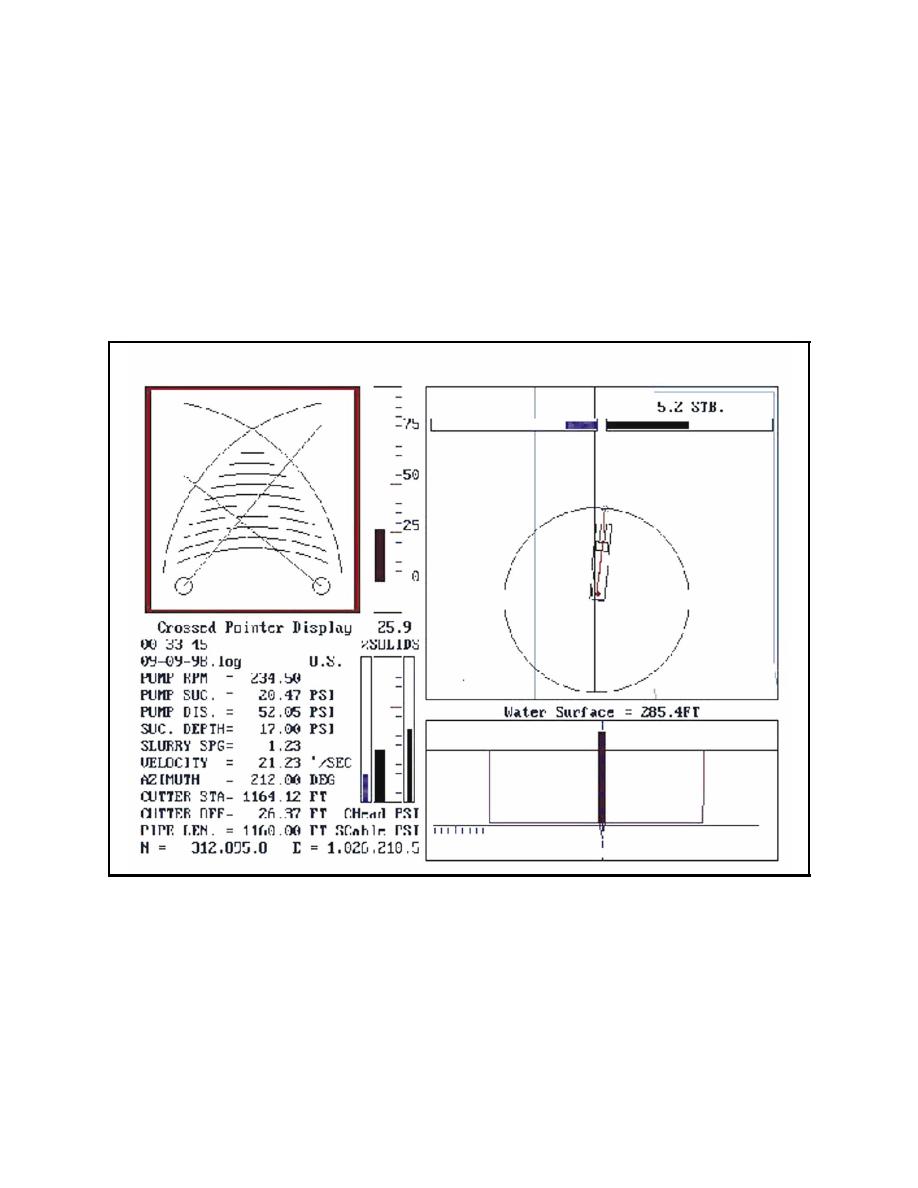 |
||
|
|
||
| |||||||||||||||
|
|
 cutterhead pressures, suction and discharge pipeline lengths, and the three-dimensional location of
the suction inlet. "This data forms the basis of monitoring the performance and effectiveness of the
dredge under the conditions encountered at the dredge site" (Chapman 1994).
A windows-based microprocessor is required to (a) continuously display parameters on an integrated
video information console and (b) record time-averaged data (converted from analog to digital) on
an interval of not more than 15 sec or as determined by the Government's representative. The
devices or system is to be equipped with an electronically scalable crossed-pointer display indicating
slurry velocity, slurry density, and instantaneous production (see Figure 2) for use by the leverman
and Government's representative or inspector.
Positioning requires a microprocessor-based Differential Global Positioning System (DGPS) capa-
ble of using U.S. Coast Guard/Corps of Engineers DGPS corrections to accurately position and
continuously trace, display, and record the location of the dredge cutterhead during dredging
operations. The minimum system output is to consist of cutterhead location coordinates compatible
with layout maps, cutterhead offset with respect to center line of dredge cut, distance downline from
beginning of the dredge cut, dredge azimuth with respect to Grid North on layout maps, current date
and time, and water-level corrections. The positioning system requirements for quality control
|
|
Privacy Statement - Press Release - Copyright Information. - Contact Us - Support Integrated Publishing |